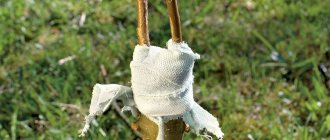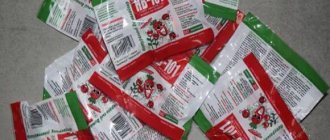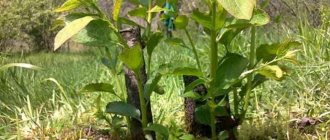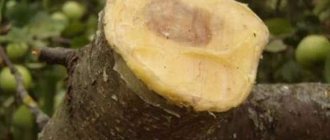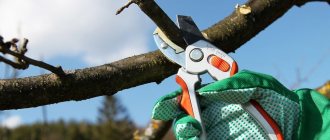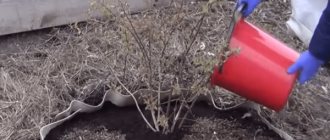What is a catch belt
To poison or not to poison? Thousands of summer residents ask this question every year. All they want is for their trees to produce an excellent harvest of fruit. But, always annoying pests can ruin your plans.
The ways to deal with them can be different. Of course, those who want to solve the problem as quickly and effectively as possible, to close this issue for themselves, are advised to use all kinds of insecticides and other chemicals.
However, it is worth understanding that this is not always safe for health. For those for whom it is important to avoid such exposure, it is worth paying attention to pest catching belts .
In simple terms, such a device is a mechanical barrier for various beetles. Since not many of them are capable of jumping, insects will not be able to overcome the obstacle. Such traps can be made from completely different components. This includes woven material, thick paper, rubber, straw and other available materials.
The principle of operation of the trap belt
This method of pest control has been known since ancient times - it is hundreds of years old. But this, believe me, does not make it any less effective. With its regular use, the number of pests of fruit trees in the garden is significantly reduced.
Such traps are especially effective against caterpillars, for example, leaf rollers. Capable of stopping hunting rings and adult insects - weevils, fruit moths, whiteflies, beetles or geese, as well as ants that can populate the foliage of trees with entire colonies of aphids.
Fruit catching belts (rings) are devices in the form of ribbons, “skirts” or funnels up to 20 cm wide, attached to tree trunks at a height of 0.5-1.0 m.
Traps are often screwed to thick skeletal branches that bend close to the ground.
Trap belt that stopped hundreds of pests
If there is tall grass next to the fruit tree, it is better to attach the trap higher so that insects cannot climb up it. It should not be made too narrow, less than 15 cm - ants are able to cross over dead relatives, as if across a living bridge.
You can use any materials for production: from paper, burlap, tow or tufts of straw to foam rubber and plastic film. The most important thing is that they are strong enough to withstand gusts of wind and precipitation.
It is advisable to inspect traps on trunks once a week or more often. After all, pests that get into them can get out. It is also necessary to check the belts after heavy rains - at this time more insects may accumulate. The devices are inspected more often both during and after the trees bloom.
To avoid “interception” of the bark, the rope harness should be periodically loosened or moved to another location. To collect accumulated insects, a film is first spread under the tree, and only then the belt is carefully removed or folded back.
If you use sticky or poisonous traps, they will need to be changed periodically. The beetles caught in the traps are collected and burned on a fire or placed in a closed container with water, in which the insects die over time.
Why is it needed?
a garden trapping belt does not protect against all bugs that people dislike . But the list of those whose invasion he can cope with is quite good. As a rule, we are talking about insects that breed in the earthen flooring and march in rows along the trunk to the leaves and fruits for feeding.
All kinds of caterpillars will not reach the target, and it will be difficult for mites and aphids to get to the food. Apple flower beetles will also encounter problems on the way to their goal, just like weevils, geese, and codling moths.
Flower beetles are dangerous because if they get on the buds, you won’t see a harvest, because these creatures destroy the inflorescences from the inside, not allowing them to develop. No less dangerous is such an animal as the bark beetle. You may not notice it right away, all because this bug makes its moves in the tissues of the tree under the bark. As a result, the plant gets sick and may even die completely.
Remember that the tree catcher should be installed at the same moment when the plants have just begun to awaken, in early spring. Otherwise, your work will go down the drain, because the notorious insects will already have time to multiply and attack the fruit trees. The temperature indicator could be plus six degrees.
This is already a favorable time for the awakening of various living creatures. Therefore, if the thermometer has already risen to this mark, arm yourself with traps. If you did not do this when the weather warmed up, then there is still the opportunity to build the structure after the fruits ripen. After all, voracious insects from already damaged fallen fruits again strive to crawl onto the crown, so it’s time to catch them.
When your goal is to combat the codling moth, you don’t need to burden the tree trunk with a belt too early. These pests become active in the height of summer. Therefore, as soon as the first two weeks of June have passed, work can begin.
Kinds
There is plenty to roam around here; the hunting belt has many varieties. The most commonly used are dry. They received such love from gardeners because they are very easy to make and use. These include, for example, funnels.
Most often, with a wide neck they are directed downwards, while the narrow one should be in very close contact with the trunk. The main thing is that there are no gaps left between the belt and the bark, otherwise everything is in vain.
Gardeners often make a double-sided structure. Those. the result is an hourglass shape, open at the top and bottom. This way it is possible to catch those pests that come down from above.
And here it is important not to forget about monitoring. After all, all dangerous living creatures will constantly accumulate in such traps, which means they need to be removed from there and destroyed right there, preferably by fire. You need to check how things are going at least once a week. And do not forget to make the bandage a little looser every month, otherwise a groove may form on the trunk.
To prevent the bugs from being able to get past the barrier, making their way through holes in the bark, some treat the area where the belts are installed with garden pitch; clay can be used for the same purpose.
When hunting specifically for ticks, corrugated paper works best. They can be installed not only on the trunk, but also on large branches. And when the gardening season comes to an end, remove all these traps and send them to the fire or compost pit.
Also among the dry options, very unusual designs made of foam rubber, or even glass wool, simply wrapped around the plant, have been noticed. If you look at such an enlarged photo
A very simple, no less reliable trap made from a plastic bottle. We are sure that everyone has some containers lying around that it would be a pity to throw away and seem to have nowhere to use. So, take this one and cut off the bottom.
The resulting workpiece must be cut vertically. Then you wrap it around the trunk. If it is wide enough, you should take two bottles and connect them together. The wide part of the container should face down.
And the narrow one should be properly secured; for these purposes, you can take tape. Like paper, this design can be made double-sided. Then the funnels will look up and down, isolating the insects coming from both sides. Small longitudinal cuts on the neck will help to install the structure more carefully.
The collar belt also belongs to the same subspecies. True, his responsibilities include only holding back descending insects. The trap looks like a bowl bordering the trunk.
It is made of rubber, and therefore it is believed that the tree will be most comfortable in such a “skirt”. After all, this material is capable of stretching, adapting to the growth and metamorphosis of the plant. And inside this bowl there should be liquid; oil is most often chosen for this purpose.
A poisonous catching belt for an apple tree is most suitable. Don't be scared by this name. All chemicals that will be used in this case will not penetrate either the fruits, the green part of the crown, or the root system.
After all, such an effect is produced using impregnated fabric, which is attached to the tree. The same poisons are used as a moisturizer. But in this case they only act on the pest, saturating its respiratory system with dangerous vapors.
And the third design option is Velcro for flies. The same principle applies here as when catching flies with sticky tape. If you are looking for an ant hunting belt , then this one will be the most suitable. By the way, these insects are the most agile.
They manage to get past other barriers. They succeed especially easily if the plant is an older tree and has perfectly even and smooth bark. But why do they make their way to the tree crowns? As it turned out, the creatures themselves are not dangerous at all.
They simply act as a “transport” for aphids. Since aphids provide them with food, ants constantly transfer dangerous pests to the leaves of trees so that they can eat. And such snacks, especially for young plants, can be destructive.
If you can’t decide which type is most suitable for your purposes, simply combine two different types at once. For example, regular dry and sticky. This won’t make things worse, the main thing is to remove everything in time and monitor the condition of the traps.
Dry catch rings
Such belts are intended for catching insects in special traps. To do this, a strip of cardboard or film in the form of a skirt or funnel is attached to the tree trunk. Its upper part is tightly wound with twine to the tree trunk so that insects do not have the opportunity to get through small holes.
Dry trap belts
Beetles or caterpillars trying to climb up the canopy encounter an obstacle that is insurmountable for them. Dry trapping belts work very effectively on apple trees suffering from codling moths. This pest can be easily detained with the help of such traps.
They should be checked more often than poisonous or sticky ones - at least once a week. After all, they detain pests only for a while. Insects caught in it can get out safely.
You can also make a hunting belt in the form of a “skirt” from rubber. To do this, the cut blank is wrapped around the barrel. To connect the “skirt” seam, it is coated with wood glue. For reliability, the resulting cavity can be filled with any viscous liquid, for example, oil or glue.
Such protection will last for a long time, so you will need to check the trap less often. As the trunk grows, the rubber belt will stretch. Over time, if it rises with the trunk, it can only be pulled down a little. Only the oil or adhesive composition will have to be changed periodically. The old one can be removed with a regular rag.
Before attaching the catch ring, be sure to clear the trunk of old, loose bark. In this case, the device will fit it more tightly. The remaining cracks can be covered with plasticine or clay.
How to do
Making a catch belt with your own hands is not the most difficult task. For the dry version in the form of a funnel, you will need paper (note that this is not the most practical option, because the device will instantly get wet at the first precipitation, which means it will lose its protective properties, the same goes for cardboard, albeit quite thick), fabric, burlap, etc. anything that can be used to build a cone.
The strip of material should be no thinner than two tens of centimeters. Form a funnel and attach it to the tree with the wide part down. And the upper end needs to be tied with twine. Some people insure themselves and cover the upper end with plasticine. That's it, the trap is ready. It turns out that insects, trying to climb up the trunk, will get stuck in this funnel along the way.
If the question is: how to make a hunting belt out of rubber , then just take a piece (five centimeters will be enough, but you can use a wider piece), wrap it around the barrel, and glue the ends.
Then turn some of the material outward to form a bowl. Pour regular sunflower oil into this container. That's all, the “killing bath” for insects is ready. True, the filler for such a trap needs to be changed periodically.
A wet poison belt should be made from burlap or something similar. The width is standard, the same twenty centimeters. You moisten them generously with chemicals and again build a funnel-shaped structure. It can still be covered with a film, otherwise the insecticide will quickly disappear and the desired result will not be achieved.
For a sticky trap you need fairly strong paper, burlap, or thin foam rubber. Some have used baking paper for these purposes, and laminate backing has also worked well. The selected glue should cover the hunting belt completely, without any gaps.
But just any kind will not work; you need one that does not lose its adhesive properties for a long time, because it is thanks to this property that the barrier will prevent the passage of insects. In addition, make sure that there are no various toxic substances in its composition. If suddenly there is no such option in the store, it is quite possible to take an adhesive mass from rodents.
It meets all the above requirements. For these purposes, you can also take resin; some people use tar. If you come across such a “specialized” glue on the supermarket counter, and the seller assures you that you can apply it directly to the bark without fear for its integrity, this is not true.
Any composition will harm the “wood skin”, so the use of a substrate is a must. You need to renew the binder layer at least once a month. And attach the material itself with twine. If it suddenly turns out to be a rainy summer, you need to check the “fillability” of such a trap more often than usual. Update it every couple of weeks.
There are also recipes on the Internet for making an adhesive mass with your own hands. To do this, you need to take almost equal parts of rosin and petroleum jelly, and ten times more pine resin.
You can make something similar to such a trap using a product for treating animals infected with parasites - creolin. It is easy to find at any veterinary store. Take two milliliters of the product and add half a liter of vegetable oil.
Don't forget to mix it all very thoroughly. Afterwards you need to apply the composition to the bark, not very high, about thirty centimeters from the ground. So you get a “two-in-one product.” After all, the frozen mass will have both a repellent effect and work like glue.
The most advanced option is an adhesive aerosol. This is for those who want to get everything done without getting their hands dirty. It all starts with the same scheme as with other types of glue - the base is attached. Then spray the composition on it.
It applies very thinly, which means it will be used sparingly. And if you have a mass that is not useful, you can always use it at home, as a remedy for annoying flies and mosquitoes, by placing traps in the form of tapes coated with the composition.
These traps are usually installed at a distance of half a meter from the ground. But this can be an indicator of thirty centimeters, it all depends on the size of the plant, the main thing is that the trap is lower than the crown.
It is worth remembering that before attaching the trap, it is necessary to carry out preparatory work. Namely, cutting off old, dried bark from a tree. But do this carefully so as not to damage the top layer of the trunk. It is better not to use iron tools for such purposes. Brushes and a rough cloth will do.
It is better not to reuse the product. If you have the opportunity and strength, build a new device every time. Extra costs it does not require. You need to remove the trap immediately after the fruits have already been collected from the trees.
But not when we are talking about apple trees or pears. After all, insects often settle on them, and in the fall they begin to crawl to the ground to take shelter there. Therefore, you have the opportunity to block them, leaving the trap until October.
Pros and cons of hunting belts
Of course, trapping belts on fruit trees have both their positive and negative sides. Let's start with the first ones. As already mentioned, their most important advantage is environmental friendliness. No pungent odors, corrosive components, or other chemical companions.
It is also worth adding good efficiency as an advantage. The percentage of insects that managed to get onto the fruits and foliage will be very low. In addition, you don’t have to worry, some stores don’t offer you such a product, you can always make it yourself if you have the desire.
The trap has no particular disadvantages. Perhaps a side effect in the form of catching not only pests, but also very useful inhabitants of the garden, ladybugs, for example. And this can harm not only the fauna itself, but also your plant. So you need to know when to stop everything and not equip everything with such “accessories”.
Another point that may be a drawback for many is appearance. After all, such traps filled with insects look very unattractive and repulsive.
And it’s not so bad if the bugs have accumulated under the funnel, it’s worse when they stick in a thick layer to the glue. So, if the aesthetics of the garden is a matter of principle for you, you will have to look for other options.
Another problem is excess condensation. When the trunk is surrounded by film for a long time, and it’s a hot summer outside, the bark simply rots. The result is diseases, cracks and other troubles. Belts left on the tree until the first cold weather also lead to splitting of the top layer of plants. The same condensation freezes at night, causing the outer fabrics to crack.
Principles and rules for using traps
The effectiveness of trapping belts largely depends on what tactics are used. It is unlikely that you will be able to protect your garden by installing catch belts alone. It is important to know how to use them correctly, how often to renew the sticky strips and refresh the poison. In practical terms, it is recommended to follow these steps:
- Traps are installed at a height of 30-60 cm from the ground surface, but the installation location should be below the skeletal branches of the tree.
- Installation is carried out before the buds begin to bloom on the tree;
- Trap belts are installed on all fruit trees in the garden;
- Inspections are carried out whenever possible every day;
- Stone fruit trees are freed from the belts after harvesting, and with apple trees, pears, and especially winter varieties, the belts remain on the trunks until the first frost and the beginning of leaf fall;
- When traps are installed, it is imperative to trim the grass under the trees.
Price of ready-made belts
Since not everyone wants to bother and sculpt something and mix it themselves, ready-made products appeared in hardware hypermarkets a long time ago. This could be a belt in the form of adhesive tape, similar to wide tape.
A product of small length, up to a meter, can be bought for one hundred, one hundred and twenty rubles. If you have a fairly large, mature tree in your garden, and you need a longer ribbon, you will have to pay the amount of five hundred rubles.
There are also specials. glues, they are inexpensive, about a hundred rubles per tube. For a set of special You will have to pay about two hundred rubles for the backing material and adhesive. Quite affordable products for every gardener.
